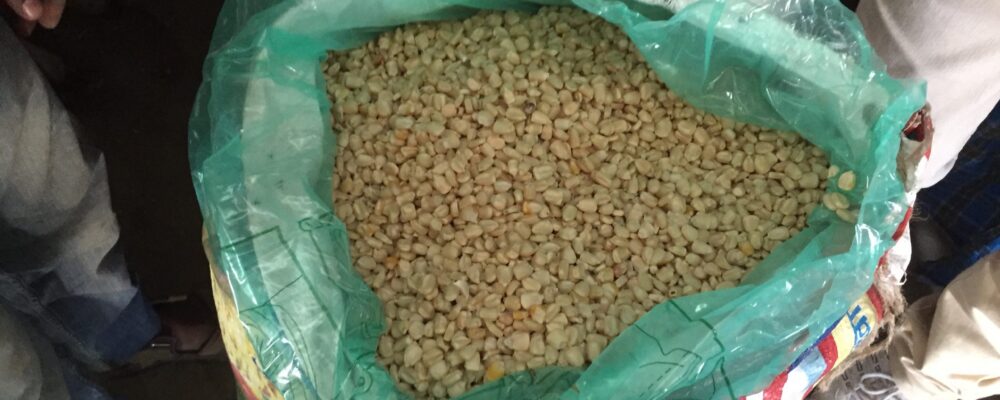
What is storage?
Grain storage refers to holding stocks of cereals for future use. Storage may be practiced by farmers, traders, millers or other private agents or by the public sector. Grain producers may store for future consumption, in expectation of higher sales prices in the future, or to use grain as seed in the future. Most privately held grain stocks are kept to ensure availability for use between harvest periods, but public stockholding may be conducted to maintain strategic or security reserves across years. Storage technologies range from woven baskets, clay pots and hermetic bags to climate controlled silos.
What causes postharvest loss at this stage?
In many countries, 50 to 60% of grains are stored on-farm in highly permeable structures or bins, usually made with locally available materials. The permeability of these technologies implies exposure to pests, temperature variation and moisture for extended periods of time. Moisture and pest damage are leading causes of loss in storage. Moisture is particularly problematic as it can lead to mycotoxin development in cereals.
How large are losses in storage?
Storage is often the stage of the supply chain where the greatest losses are observed. In many cases, these losses reflect process failures in drying or other stages, but the losses manifest during storage. In temperature-controlled, hermetically sealed environments, losses are very low, while in environments that allow temperature and moisture content to vary and allow exposure to pests, losses are significant. In a survey of the literature, Kumar and Kalita (2017), report losses in storage as high as 40% for poorly stored maize in humid tropical conditions and as low as 1% for maize in well-controlled settings. That study also sites storage losses in rice that range from 3 to 25%, depending on technology and setting.
What does research focus on?
In addition to determining actual amounts of loss, research at the storage level examines different types of storage including hermetically sealed bags and containers. Research also explores different alternatives for different global regions.
To read research articles focusing on storage, refer to the table below.
| Titles | Authors | Tags | Publication Date | Category |
|---|---|---|---|---|
Pallavi Shukla | Storage, India, India PHL Forum | 2020 | Blog Post | |
Jessa Barnard, Sarah Schwartz, and Maria Jones | Drying, Storage, Bangladesh, Ghana | 2020 | Blog Post | |
Rohini Kashimshetty | Drying, Storage, India | 2020 | Blog Post | |
On- and Off-Farm Mechanization in Bangladesh: A Sustainable Approach to Ensure Food Security | Dr. Chayan Kumer Saha | Drying, Storage, Mechanization, Bangladesh | 2020 | Blog Post |
PHL Scholars: Examining the economic impacts of post-harvest loss prevention | Gowthami Venkateswaran | Storage | 2021 | Blog Post |
Somavat, Pavel, Haibo Huang, Sunil Kumar, et al. | Storage, Wheat, PHL Technology | 2015 | Journal Article | |
Efficacy of Diversified Rice Storage Technologies in Bangladesh | MA Hossain, MA Awal, MR Ali, MM Alam | Paddy, Storage, PHL Technology | 2019 | Journal Article |
Kumar, Deepak, and Prasanta Kalita | Storage, Maize, Paddy, Wheat, PHL Technology | 2017 | Journal Article | |
Steinman, Loren W., et al. | Storage, Oil Seeds | 2020 | Journal Article | |
Using Improved Storage Technology to Reduce Food Insecurity and Postharvest Losses in India | Pallavi Shukla, Kathy Baylis, Hemant Pullabhotla | Storage, PHL Technology | 2019 | White Paper |
Comparison of Hermetic Storage of Wheat with Traditional Storage Methods in India | Somavat, Pavel, Haibo Huang, S Kumar, et al. | Storage, Wheat, PHL Technology | 2017 | Journal Article |
References: Kumar, Deepak, and Prasanta Kalita. “Reducing Postharvest Losses during Storage of Grain Crops to Strengthen Food Security in Developing Countries.” Foods, vol. 6, no. 1, Jan. 2017, p. 1. EBSCOhost, doi: https://doi.org/10.3390/foods6010008.

